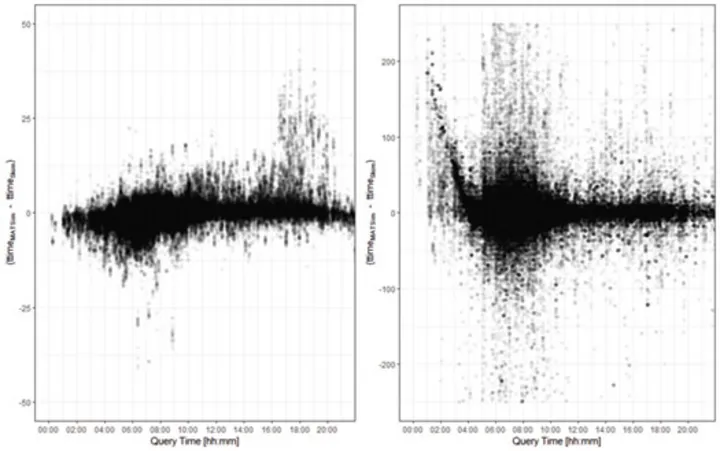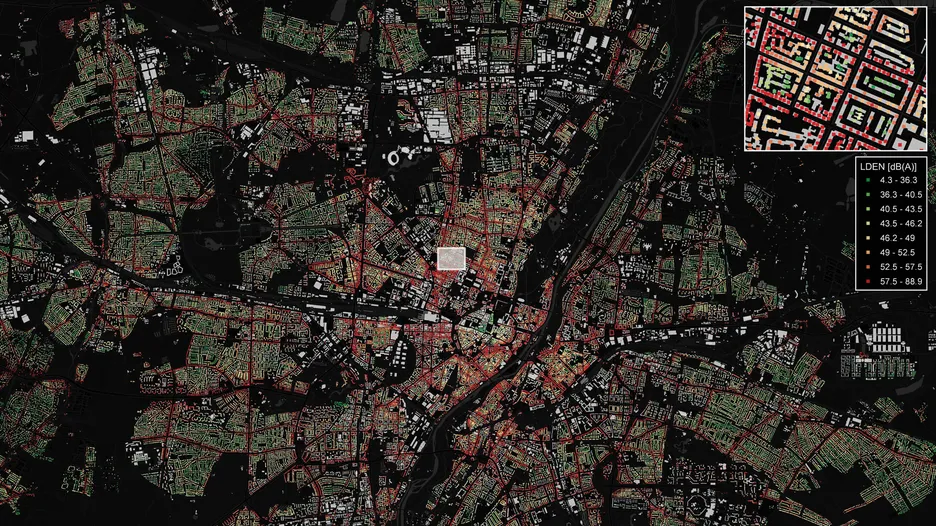Agent-based model of people and travel behavior
This team develops agent-based models for the simulation of travel behavior, demographic transitions, housing markets, and traffic flows. The microscopic integration of these models allows for a consistent analysis at the agent level. Implications for health, well-being, and the environment are of particular interest.

Focus Group Modeling Spatial Mobility
Prof. Rolf Moeckel (TUM), Alumnus Rudolf Mößbauer Tenure Track Assistant Professor | Prof. Kelly Clifton (Portland University), Alumna Hans Fischer Senior Fellow | Dr. Ana Tsui Moreno Chou (TUM), Postdoctoral Researcher | Qin Zhang (TUM), Doctoral Candidate
The Focus Group Modeling Spatial Mobility (MSM) was established in 2015 and focuses on integrated land use / transport modeling and travel behavior research. After Prof. Moeckel was granted tenure in 2021, it was renamed Travel Behavior (TB) to better account for the larger scope of research. Currently, the team works on model development of land use, transport, and related models, such as environmental impact models and health models. This also includes the spatial analysis of travel behavior and location choice of households and firms. The interaction between land use and transport is of particular interest.
An integrated land use / transport modeling suite was implemented for the Munich Metropolitan Area. The base year is 2011, and the model simulates land use and travel behavior through 2050. The study area consists of 444 municipalities with a population of 4.5 million, subdivided into 4,924 automatically generated zones [1]. The study area has been delineated on the basis of commuter flows. The modeling suite consists of the land use model SILO [2], the travel demand model MITO [3], and the assignment model MATSim. The former two were developed from scratch by this research group, and the latter was developed at ETH Zurich and TU Berlin. All three models are built as agent-based models that simulate individual households and persons.
In cooperation with Hans Fischer Senior Fellow Dr. Kelly Clifton from Portland State University, the existing modeling suite was extended by the pedestrian model MoPeD [4]. MoPeD coefficients were reestimated with Munich data and integrated with the above-described SILO / MITO / MATSim modeling suite. All models developed by this research group are open source under the GNU license and provided at github.com/msmobility free of charge. Interested users are welcome to download, use, and further develop these models. As far as legally possible, data to run these models are shared as well.
Complementing this work is the exploration of walking behaviors and the links to health outcomes using novel data sources. The emergence of longitudinal, location-based data offers the potential to understand the variability of individual activity and travel patterns. We have used Google Location History data to better understand travel behavior over a longer time period and to explore the impact of life events on travel behavior. In cooperation with Dr. James Woodcock from the University of Cambridge, we are adding a health model to our models to explore the impact of active mobility on the individual health status.
Figure 1
A novel aspect of the work conducted at TUM is the agent-based integration of land use and transport models. Traditionally, so-called skim matrices are calculated that provide travel times from zone to zone at a given time of day. In our microscopic integration, highly aggregate skim tables are not required anymore, but rather individual queries of travel time are calculated between two x / y coordinates at a specific time of day [5]. Figure 1 shows the resulting difference. Differences in transit (right figure) are substantially larger than for auto (left figure), as the true schedule at a given time (agent-based integration) is more accurate than the skim-based travel time (traditional integration) queried during the morning peak.
Special attention was given to the simulation of traffic noise. Traffic noise has severe health impacts. Traffic noise can lead to sleep disturbances, tinnitus, and cardiovascular diseases, and it increases the risk of heart attack by 20 % for every sixth person in Germany. Figure 2 shows the simulated traffic noise volumes in Munich, accounting for shielding and first-order reflections. While major arterials create high noise levels, inner courtyards are often very quiet despite central locations.
The impact of traffic noise volumes on housing costs were analyzed econometrically. It was found that moderate noise levels between 55 and 65 dB(A) lead to a price reduction of six percent while high noise levels above 65 dB(A) reduce housing cost by ten percent [6]. This has severe equity implications. Residents with higher income (who tend to have higher auto-ownership rates and tend to generate more traffic noise) often are able to buy out of traffic noise, while people with lower income may not be able to afford a quiet place to live [7].
The agent-based (but trip-based) travel demand model MITO is currently replaced with an activity-based travel demand model. Such models do not simulate trips for the sake of traveling, but rather simulate activities at different locations, and travel results as a necessity to conduct these activities. The model covers an entire week to allow for adjustments (such as postponing grocery shopping by a day) and to better represent leisure travel, which is more common on weekend days.
[1]
Molloy, J. & Moeckel, R. Automated design of gradual zone systems. Open Geospatial Data, Software and Standards 2 (1), Art. no. 19, (2017).
[2]
Moeckel, R. (2017).
[3]
Moeckel, R. et al. (2020).
[4]
Zhang, Q., Clifton, K. J. & Moeckel, R., Orrego-Oñate, J. Household Trip Generation and the Built Environment: Does More Density Mean More Trips? Transportation Research Record: Journal of the Transportation Research Board, Vol. 2673, Iss. 5, 596–606 (2019).
[5]
Kuehnel, N. et al. (2020b).
[6]
Kuehnel, N. & Moeckel, R. ( 2020a).
[7]
Kuehnel, N., Ziemke, D., Moeckel, R. Traffic noise feedback in agent-based Integrated Land-Use / Transport Models. Journal of Transport and Land Use 14 (1), 325–344 (2021).
Selected publications
- Kuehnel, N., Moeckel, R. Impact of simulation-based traffic noise on rent prices. Transportation Research Part D: Transport and Environment 78, Art. no. 102191 (2020a).
- Kuehnel, N., Ziemke, D., Moeckel, R. & Nagel, K. The end of travel time matrices: Individual travel times in integrated land use/transport models. Journal of Transport Geography 88, Art. no. 102862 (2020b).
- Moeckel, R., Kuehnel, N., Llorca, C., Moreno, A. T. & Rayaprolu, H. Agent-based Simulation to Improve Policy Sensitivity of Trip-Based Models. Journal of Advanced Transportation, Art. no. 1902162 (2020).
- Moeckel, R., Llorca Garcia, C., Moreno Chou, A. T., Okrah, M. B. Trends in integrated land use / transport modeling: An evaluation of the state of the art. Journal of Transport and Land Use 11 (1), 463–476 (2018).
- Moeckel, R. Constraints in household relocation: Modeling land-use / transport interactions that respect time and monetary budgets. The Journal of Transport and Land Use Band 10 (2), 1–18 (2017).
Full list of publications

